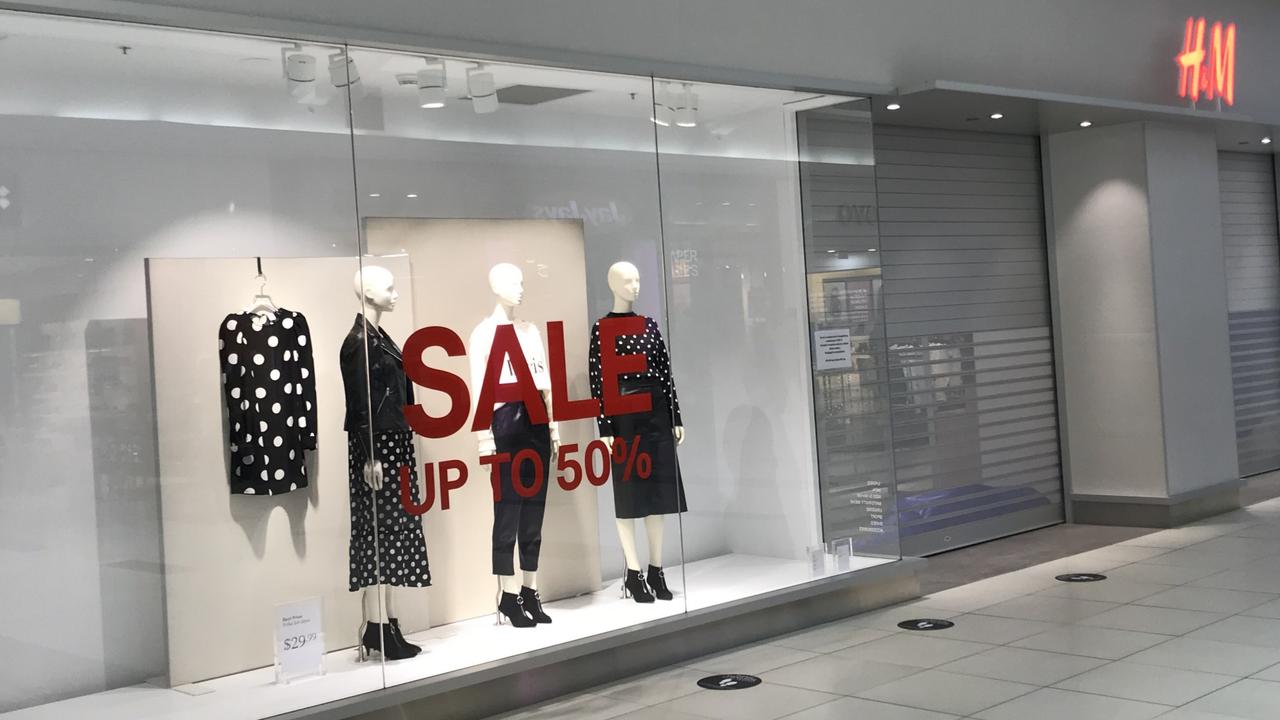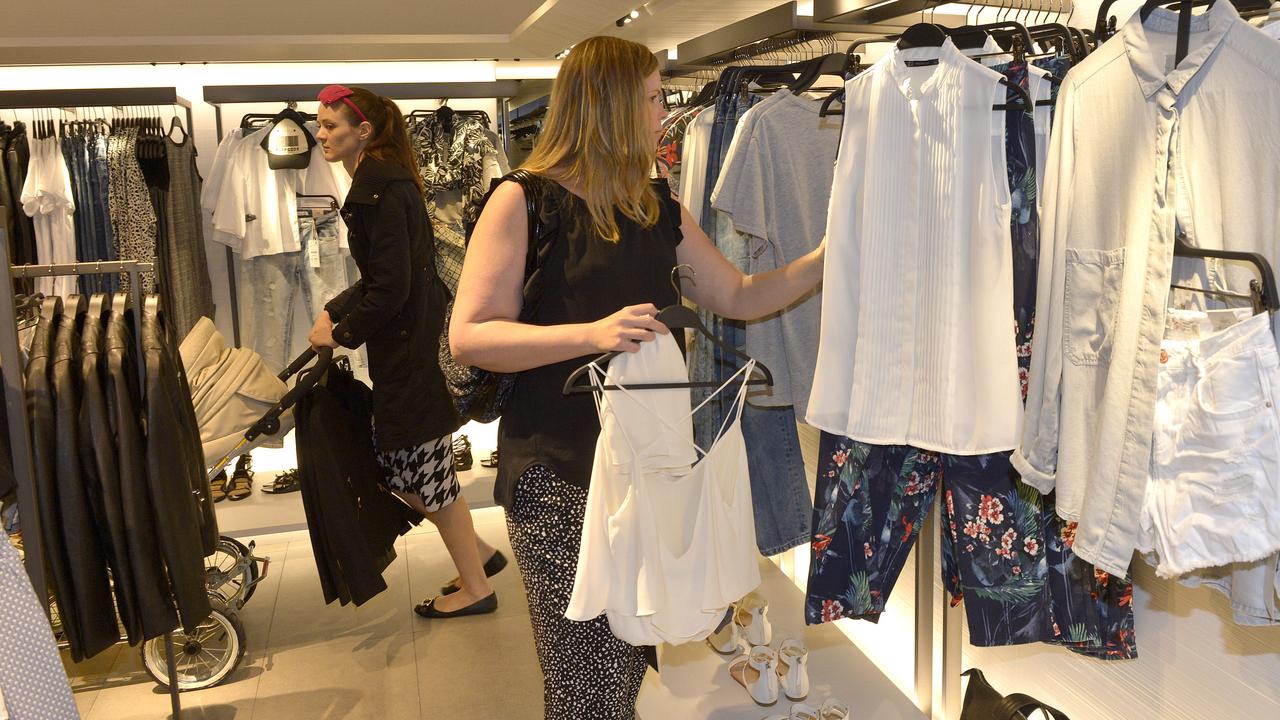H&M announces store closures amid rise in fast fashion competitors like Kmart and Big W
Popular retail outlet H&M has announced a number of store closures and cheap and cheerful clothing alternatives could be to blame.
H&M store closures across Australia could be due to fierce competition in fast fashion from local retailers like Kmart and Big W.
The Swedish fashion retailer confirmed it is planning to close two of its 49 Australian stores – H&M Townsville and H&M Rockhampton on March 15 – after shuttering its Chatswood site in North Sydney in January.
Dr Gary Mortimer, Queensland University of Technology retail expert, was surprised that H&M was shuttering stores but said the fast fashion segment in Australia was reaching a high level of saturation.
“It’s a challenging time and H&M are now recognising that they have potentially opened too many stores or have opened stores that are not viable, because potentially there is an increase in competition,” he told news.com.au.
“It’s interesting to note that premium brands – the likes of Smiggle and Noni B – have done incredibly well, so it may suggest that the fast fashion segment in Australia is reaching a level of saturation where you have got the likes of H&M, Zara, Uniqlo and Kmart, Big W and Target all competing for the small shopping dollar.”
RELATED: H&M to close stores across Australia

The improvements discount department stores have made with their retail offering was also an important factor, Dr Mortimer said.
“Woolworths invested heavily into its Big W business to improve its range and offering, Target stores are investing heavily into its range of apparel and footwear and Kmart continues to dominate that cheap and cheerful sector,” he said.
“When competing in that market for budget conscious consumers that are looking for reasonably good quality, on-trend items at a low price, the market is flooded with options.”
A H&M spokeswoman denied reports it plans to shut about 15 per cent of its network after a drop in sales during the pandemic.
Retail industry insiders had told The Australian newspaper that five other Aussie stores faced the chopping block, including the Bondi Junction (NSW), Kotara (Newcastle, NSW), Warringah Mall (NSW) and Chirnside (Victoria), but the H&M spokeswoman said the company had no information or announcements regarding other stores.
H&M’s results in Australia – one of its best-performing regions – also stumbled, after the company poured tens of millions of dollars into its nationwide expansion. From a profit of $2.6 million in 2018, H&M Australia clocked a full-year loss of $1.19 million.
Sales in Australia fell by 17 per cent to about $316 million during the year ending November and fell 7 per cent to about $90 million in the fourth quarter.

Dr Mortimer said the H&M store closures also flag the challenges still facing the clothing, footwear and accessories retail sector – with a number of big brand names folding over the last few years including Rivers, Pumpkin Patch and Jeans West.
“It also signals how that particular segment of retail is highly exposed to discretionary spending,” he said.
“While the retail sector in general has performed exceptionally well over the last six to eight months – because we are not travelling and therefore we are spending that money – but it’s on consumer electronics and those types of products, so sectors like Bunnings, JB Hi-Fi and Harvey Norman have all done incredibly well.”
In October last year, H&M also launched its online store in Australia and Dr Mortimer said this may be having an influence on the store closures.
“They were very slow to adopt that channel so it could be very much the case that if 15 or 20 per cent of its revenue stream is coming from this new channel that it potentially enables them to close a small handful of physical stores and not obtain a material loss of revenue and all that does is save costs of lease, rent and staffing,” he said.

Dr Mortimer said that had been the strategy for Accent Group, which owns brands such as Athlete’s Foot, Platypus and Hype DC, when it announced in April 2020 that it planned to shut stores and shift major parts of its business online.
It reported a huge shift in spending during lockdown with digital sales jumping from an average of $250,000 per day in early March to as much as $1.1 million per day during the last two weeks of April.
Regarding the three confirmed store closures, the H&M spokeswoman said the decision had been made following a global review of sustainable store operations and in connection to its accelerated transformation work to secure sustainable growth for the future.
“While we acknowledge the impact this will have on our colleagues as well as local communities, we see these store consolidations as vital in ensuring the long-term growth of the company,” she said. “Regardless of these closures, our physical stores remain incredibly important to us.”

Other international retailers like Zara had gained a good footing in Australia, Dr Mortimer added.
“I think the likes of Zara have done incredibly well but recognising they have a much smaller footprint, they are focused on CBD malls as well as big centres so your flagship centres like Bondi Junction and Chadstone,” he said.
“But selecting sites like Townsville is probably questionable, the market size is clearly not big enough to sustain a big store like H&M.”



